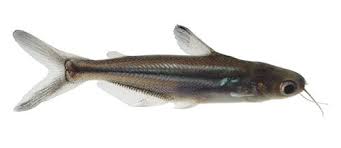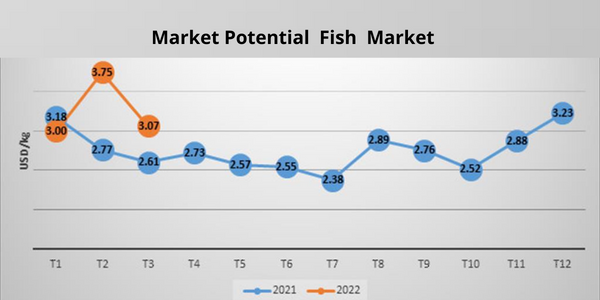Project Report For Pangasius Fish Farming
Introduction
Pangasius fish farming project report is as follows:
The shark catfish species known as Pangasius pangasius is a native of the fresh and brackish waters of Bangladesh, India, Myanmar, and Pakistan. Pangassius fish is also known as the sutchi catfish, silver-striped catfish, Siamese shark, or swai catfish. This freshwater fish is unique to the Mekong basin and lives there. It is a riverine catfish that is a member of the Pangassidae family.
Despite the fact that Pangasius is mostly found in freshwater, it can survive in environments with salt concentrations of 0.7 to 1% and alum water (PH >5), which it can endure at temperatures of up to 30°C. Pangasius is a fish with a sleek body, a dark grey coloured back, a silver belly, a broad mouth, and a long twin beard. It also possesses an extra respiratory organ, more red blood cells than other fish, and the ability to breathe via bubbles and skin. This indicates that it can survive in conditions with minimal dissolved oxygen.

Pangasius is a viable option for aquaculture due to a number of factors. Its potential cultural range spans regions with sufficient water supplies, including the tropics worldwide. Aquaculture operations have more recently been relocated to the provinces of Ben Tre, Tien giang, and Vinh Long, which are close to the mouth of the Mekong River, where the ecological conditions are favourable due to the natural tidal movements that occur twice daily and some large and small islands that are far from populated areas.
Sample Project Report Of Pangasius Fish Farming
Get Completely Custom Project Report
Pangasius may be raised in monoculture or polyculture with other carp species in India. The species may reach heights of 1 to 1.5 kg in a single year, and yearly yields are typically in the range of 10 to 15 tonnes per hectare. The National Fisheries Development Board estimates that by 2008, pangasius was being farmed over a surface area of roughly 40,000 hectares. Over time, this species’ culture in India has developed and is now well-liked by fish farmers in numerous regions. At this period, output is thought to be between 400,000 and 425,000 metric ton. Additionally, pangasius are extremely fertile; females may generate up to 80,000 eggs per kilogramme and can spawn many times. Pond production can result in yields of between 250 and 300 mt/ha, which is more than 4 times what other aquaculture species can produce. Impoundments, lakes, or rivers are used for cage production, and stocking rates typically range from 100 to 150 fish per cubic metre, with yields of between 100 and 120 kg/m3. Additionally, floating cages support constant water exchange while enabling better fish densities and production.
Market Potential Of
Market potential
This most recent analysis predicts that the Pangasius Market’s growth will change significantly from the previous year in 2022. It Market will have a spectacular increase in CAGR over the next five years in terms of revenue. For the purposes of this study, 2021 has been used as the base year and 2022 to 2028 as the forecast year to estimate the Pangasius market size. In contrast, the native catfish, also known as Indian magur (Clarias batrachus), grows more slowly in captivity while commanding higher mart prices. According to the Central Institute of Freshwater Aquaculture in India, it barely generates 2 to 3 tonnes per acre and matures to a marketable size of 100 to 150 grammes in 10 to 12 months.

Pangasius can be raised in monoculture or polyculture with other carp species in India. The species may reach heights of 1 to 1.5 kg in a single year, and yearly yields are typically in the range of 10 to 15 tonnes per hectare. The National Fisheries Development Board estimates that by 2008, pangasius was being farmed over a surface area of roughly 40,000 hectares. Over time, this species’ culture in India has developed and is now well-liked by fish farmers in numerous regions. Current output is projected at roughly 400,000 to 425,000 metric tonnes per year (GAA GOAL 2016 statistics) (GAA GOAL 2016 data). The National Fisheries Development Board published its NFDB Manual on Guidelines for It Cage Culture in 2016, a few years after the Indian government began supporting the culture of pangasius in cages in reservoirs and other bodies of water. The government has sponsored and subsidised a number of cage farming initiatives via its “Blue Revolution” objective. The government has funded the project “Demonstration of Cage Culture Technology in Himachal Pradesh Reservoirs” (Indian Council of Agricultural Research/Central Inland Fisheries Research Institute; ICAR/CIFRI) in this respect via the National Agriculture Development Scheme. This serves as a timely justification for encouraging higher fish output and providing financial assistance to the state’s inland farmers.

